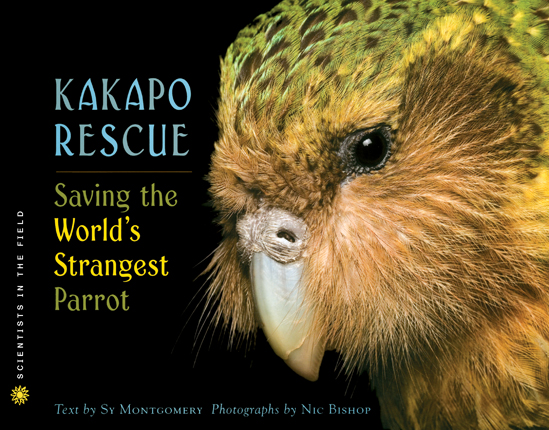Recognizing the power of information: The Robert F. Sibert Medal
 The Robert F. Sibert Informational Book Award, also known as the Sibert Award or Medal, was founded ten years ago and is administered by the Association for Library Service to Children. This tenth anniversary provides a perfect opportunity to reflect on the Sibert Award’s creation, process and impact.
The Robert F. Sibert Informational Book Award, also known as the Sibert Award or Medal, was founded ten years ago and is administered by the Association for Library Service to Children. This tenth anniversary provides a perfect opportunity to reflect on the Sibert Award’s creation, process and impact.
“We felt that there was a large gap when the library world had high-profile awards for picture books and novels but nothing devoted to excellence in nonfiction books for young people,” recalls Bob Sibert, President of Bound to Stay Bound Books and son of the Sibert for whom the award is named. Bob felt that a “nonfiction children’s book award from librarians should be an even higher priority than the Caldecott or Newbery in my eyes.”
Bob recalls that “I also saw the 1990s as an almost unheralded Golden Age in children’s nonfiction, thanks to several determined publishers and great authors such as Russell Freedman, Jim Murphy, James Giblin and others.” Yet many of these authors’ works were underappreciated. Enter the Sibert Award: “A high-profile award for children’s nonfiction would focus more attention on the great books that were being made available for children but that a lot of kids, parents and teachers were not aware of.”
Barbara Brand of Johnson County Public Library in Kansas was delighted to chair the Sibert Award committee this year. She had served on both the Caldecott and Newbery committees so she was familiar with the way things worked. “It’s all about the process — the guidelines are laid out so well,” she explains. The guidelines to the Sibert Award are very explicit and it is vital for each member to follow them rigorously as they evaluate candidates for the award. “Our committee was great,” enthuses Brand. “Not only were they very responsive, timely and dedicated, but they also really listened to each other.”
As Chair, Barbara was responsible for ensuring each person met deadlines and was in the loop on committee activities. As with all awards, a consultant was provided to ensure the process ran smoothly, in this case it was Sandy from the Association for Library Service to Children. At the same time, Barbara was making her own recommendations and responding to the special challenges laid out in the guidelines. One of the most difficult issues to work through was the broad age range of the award which extends from birth to 14. Committee members must look at the support material — bibliographies, back matter, research–while also keeping in mind the audience for which the book was intended. The level of information needed for a three-year-old is very different for a 14-year-old, “yet we still have to know that the same care was taken to ensure the information is correct and appropriate for the younger child,” notes the committee chair.
 “I’m the mother of two boys and boys tend to like nonfiction,” reflects Barbara. “This really helped me on a personal level.” Predisposed to favor picture books from her twenty years of story times, Brand comments that this committee helped her “gain a huge appreciation for nonfiction — and the respect the authors have for children.” She also feels that “Since this award has been created you can see a difference in the way the authors and publishers approach nonfiction.” With notable exceptions (see above), Barbara remarks that “Once upon a time [nonfiction books] were just remakes of adult books where they took the facts and simplified them for kids.”
“I’m the mother of two boys and boys tend to like nonfiction,” reflects Barbara. “This really helped me on a personal level.” Predisposed to favor picture books from her twenty years of story times, Brand comments that this committee helped her “gain a huge appreciation for nonfiction — and the respect the authors have for children.” She also feels that “Since this award has been created you can see a difference in the way the authors and publishers approach nonfiction.” With notable exceptions (see above), Barbara remarks that “Once upon a time [nonfiction books] were just remakes of adult books where they took the facts and simplified them for kids.”
That is clearly no longer the case, as proven by a recent winner, Kakapo Rescue: Saving the World’s Strangest Parrot, written by Sy Montgomery, and photographs by Nic Bishop.
Possibly the most enjoyment Barbara had during her Sibert responsibilities was when she hosted a Mock Sibert at her library. “It was so much fun to talk about the books and see people’s reactions.” She adds that “It’s important for a child to know that an adult didn’t just make this up –the author needs to show where the information came from.”
Lastly, Barbara enjoys that “The beauty of some of these books is that they do question things that have been accepted all along and they will tell the readers that things change and that the reader should question things.”
And that is really what the Robert F. Sibert Informational Book Award is all about — informing and enlightening young readers, inspiring them to think and feel and know the world around them.
